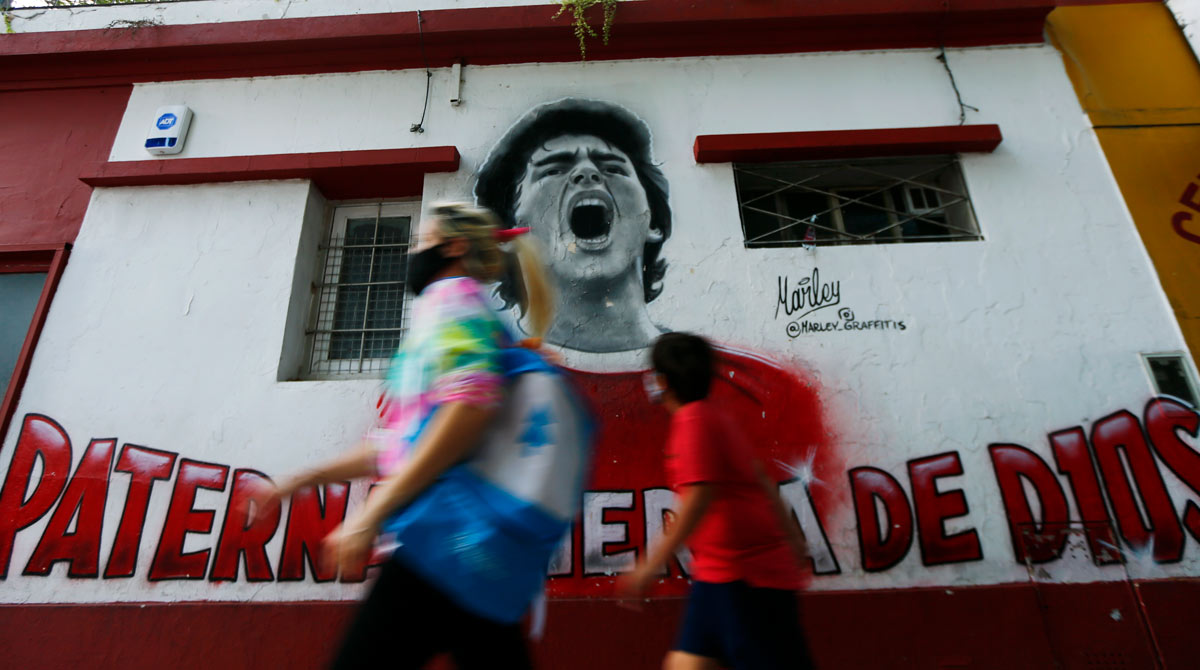Latin America: World class resources are a prize for Australian plays

Latin America holds rich prizes for Australian resource companies. Pic: via Getty Images
Soaring mountain vistas, thick jungles and a mineral endowment rivalling any around the world. These are all traits shared by countries in Latin America that have the Andes – the world’s longest continental mountain range – running through their countries.
So just how prospective is prospective? Chile and Peru together account for about 40% – that’s right, 40% – of the world’s copper production.
And that’s just copper. Latin America is also well known for producing nickel, gold, silver, iron ore and lithium – with Chile being the second largest producer of the battery metal.
Andean Mining managing director William Howe told Stockhead that these riches, which are also the main drawcard for companies looking for precious and base metals in the region, are due to the prolific Andes metallogenic belt that runs along most if not the entire length of the Andes.
“It is a very prolific mineralised belt and if anybody wants to be in the copper-gold business and you want to be in that part of the world,” he added.
He noted the major porphyry deposits, such as the giant copper mines in Chile and Peru, are associated with subduction zones created by the Pacific Plate subducting under the South American plate.
A strong background in mining
Chile and Peru both have a considerable headstart over their neighbours as they historically had governments that were conducive to mining.
“They are hugely established and Peru is actually from a copper production point of view, actually taking off quite substantially, there are some big copper developments there,” Howe explained.
However, their rich bounty has proven irresistible to the potential detriment of the industry.
Chile’s Senate is currently considering a modified version of a bill passed by the House last year that would impose a 1% sales tax for companies producing less than 200,000t of copper per annum and 3% for production exceeding 200,000tpa.
Lithium producers would also be subject to a 3% annual sales tax with some exclusions.
S&P Global quoted Freeport-McMoRan chairman and chief executive Richard Adkerson as saying during its 26 January earnings call that the unknowns around Chile’s tax and royalty structures had led the company to slow down development at its El Abra copper mine in the country.
Meanwhile, the Peruvian government is planning to try amending the country’s tax code again after its previous attempt to increase taxes on the sector was voted down by Congress.
“Argentina has been a mixed bag over time, if you are San Juan Salta kind of area, you’re in mining friendly areas. Pretty much the rest of the country is unfriendly to mining,” Howe said.
This is backed by the Fraser Institute, which ranked Argentina and Venezuela as amongst the 10 least attractive jurisdictions for investment in the overall Investment Attractiveness Index compiled for its 2020 Annual Survey of Mining Companies.
“Bolivia was developed a long time ago, mostly by the British. It has gone backwards because it had a chequered history over the last 20-30 years. So I don’t think there has been much exploration done there for some time now,” Howe explained.
“Ecuador was very socialistic in the Correa era and they are only just starting to open up.”
The real winner might well be Colombia, which topped the ranking for Latin America and the Carribean Basin, with the only negative being unnecessarily long stakeholder consultations that hinder the permit approval process.
Howe noted that while Colombia had its own problems into the 1990s with the drug trade, it has had conservative governments pretty much consistently since the death of drug lord Pablo Escobar in 1993.
“Because it had been left behind historically, there is tremendous prospectivity as those deposits you see in Chile and Peru also exist in Ecuador and Colombia,” he added.
“This is borne out by some of the big porphyry systems that have been found by AngloGold Ashanti – La Colosa and Quebradona.
“La Colosa has 28 Moz of gold in the ground, Quebradona is a copper-gold porphyry but it is also about 28 Moz of gold equivalent. They have got big deposits and there are many more to be found. There just hasn’t been exploration.”
Andean Mining itself recognised Colombia’s potential a long time ago, which is also why it snapped up the El Dovio copper-gold (with silver and zinc) project when the opportunity presented itself.
El Dovio is a volcanogenic massive sulphide system with high-grade lenses contained within a shallow, well-developed and mineralised (albeit to a lesser extent) stockwork system that is up to 68m wide, both of which are exposed at surface.
Its shallow nature means that it would be relatively inexpensive to quickly drill out a maiden JORC resource while ensuring that any mining operation would be relatively inexpensive.
Andean is currently focused on progressing its $6m initial public offering that closes on 29 April with listing expected on 16 May.
“There is a lot of work going on in the background, applications and regulatory work, making sure that we have got all the licences in place to operate on the ground from the drilling point of view. The minute the IPO closes, we will press go,” Howe concluded.
ASX juniors in Latin America
Andean is certainly not the only Australian company operating in Latin America. There’s a pretty substantial list of ASX juniors that are carrying out exploration in the region.
Solis Minerals (ASX:SLM) has been advancing its Mostazal copper project in Chile with recent drilling intersecting broad zones of copper, some from surface.
This has enhanced the scale of the “manto” copper system and plans are afoot to expand the drill program.
It seeks to verify historical drilling results to assist in establishing a maiden JORC resource for the surface manto copper system.
Galan Lithium (ASX:GLN) is currently progressing a feasibility study for its Hombre Muerto West lithium brine project in Argentina with delivery expected late in the fourth quarter of this year.
The project currently hosts a resource of 2.3 million tonnes lithium carbonate equivalent at a grade of 946mg/l lithium within Argentina’s Hombre Muerto West salt flat in the South American lithium triangle.
Economics are expected to be attractive with the Preliminary Economic Assessment estimated unleveraged pre-tax net present value and internal rate of return at US$2.2 billion and 37.5% respectively.
Lithium Energy (ASX:LEL) recently picked up a key environmental approval for its flagship Solaroz project, which has a big exploration target of 1.5-8.7Mt of lithium carbonate equivalent at a concentration of 500 mg/L lithium and 700 mg/L Li.
The EIA will allow work to start on the Payo tenement, one of eight tenements that make up the project and located just 7km from Allkem’s (ASX:AKE) Olaroz plant.
This will consist of mapping and geophysics to improve the company’s understanding of the underlying hydro-geological and geochemical characteristics of the brine rich aquifer that comprises the Olaroz Salar underneath the Solaroz tenements.
Latin Resources (ASX:LRS) is a veteran explorer in Latin America and recently enjoyed early success from its Salinas project in Brazil with the first diamond hole intersecting three separate spodumene rich pegmatites down dip from high-grade outcropping lithium.
Given that the project is located within one of the world’s best mining jurisdictions, the result is supremely encouraging for the company, which has another 13 holes coming up to test the full 1.2km strike extent of its mapped pegmatites.
The company also holds the Catamarca lithium project in Argentina where field work is expected to begin in March, the MT-03 copper project in Chile, and a 14% stake in Solis Minerals.
Hot Chili (ASX:HCH) has been going from strength to strength at its Costa Fuego copper project in Chile with drilling recently confirming a new higher grade core at the main Cuerpo 3 porphyry.
This and the 52,000m of drilling completed since the maiden resource was delivered in October 2020 is expected to deliver a material expansion of both high grade and bulk tonnage mineralisation at Cortadera once the resource update is released later this quarter.
Modelling of copper mineralisation has also indicated that all three porphyries at the project are linked, with the expansion of shallow material at Cuerpo 1 and 2 from surface providing the company with both open pit and underground mining options.
Bastion Minerals (ASX:BMO) holds the Capote gold project in Chile where previous work such as a ground magnetic survey, IP and AMT work that have been combined to provide a highly detailed dataset for accurate drill targeting.
The company will carry out a 5,000m diamond drilling program to test the shallow surface expression of multiple vein systems where high-grade gold has been returned from recent rock-chip campaigns.
Drillhole locations have been designed and regulatory and environmental approvals are underway.
In Argentina, Challenger Exploration’s (ASX:CEL) flagship Hualilan gold project is currently the subject of an extensive 120,000m drill program with nine rigs currently operating
Recent assays from holes covering 1.5km of strike at the Verde Zone returned some notable results including 67.7m grading 7.3g/t gold, 5.7g/t silver and 0.6% zinc from a depth of 300.4m.
The company noted that many holes continued to encounter multiple stacked zones of mineralisation and intersections of steeper and shallower dipping mineralised zones.
Titan Minerals (ASX:TTM) has been enjoying some standout gold-silver drill hits at its Dynasty project in Ecuador.
Recent drilling has returned hits such as 102.7m hit grading 1.44g/t gold from a depth of 46.5m.
It also holds the Copper Duke project, where it has started maiden reconnaissance drilling in January.
Valor Resources (ASX:VAL) is progressing its Picha copper-silver project in Peru.
Last year, the company completed an extensive ground based mapping and sampling program along with a detailed IP and ground based magnetic survey.
At Stockhead we tell it like it is. While Andean Mining, Galan Lithium, Lithium Energy, Hot Chili, Titan Minerals and Valor Resources are Stockhead advertisers, they did not sponsor this article.
Related Topics

UNLOCK INSIGHTS
Discover the untold stories of emerging ASX stocks.
Daily news and expert analysis, it's free to subscribe.
By proceeding, you confirm you understand that we handle personal information in accordance with our Privacy Policy.








